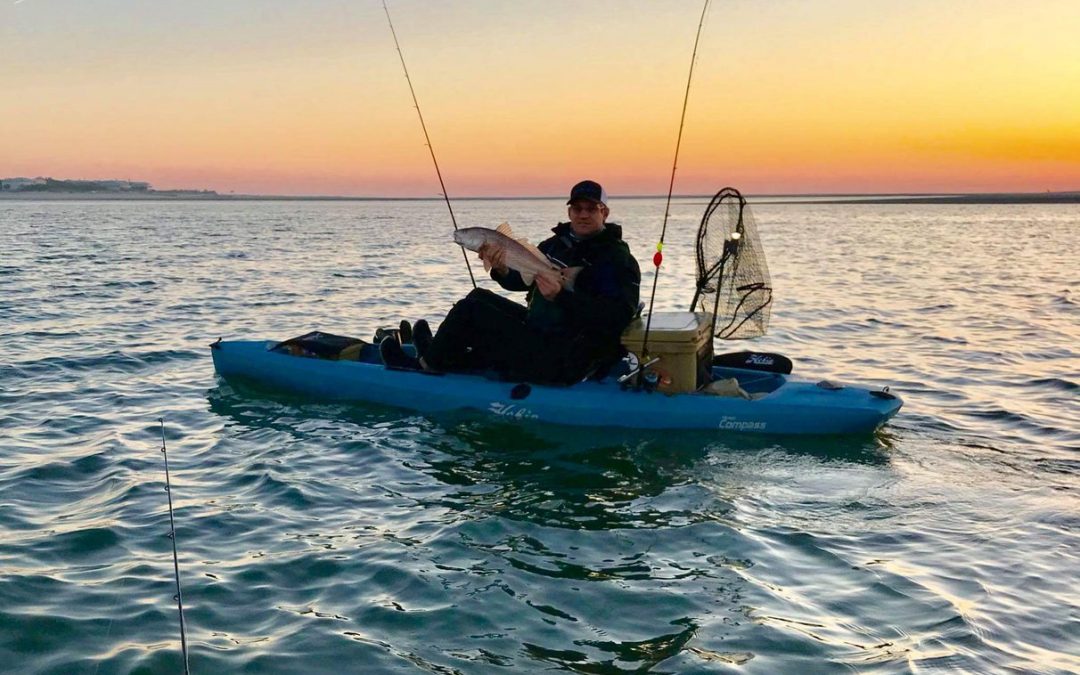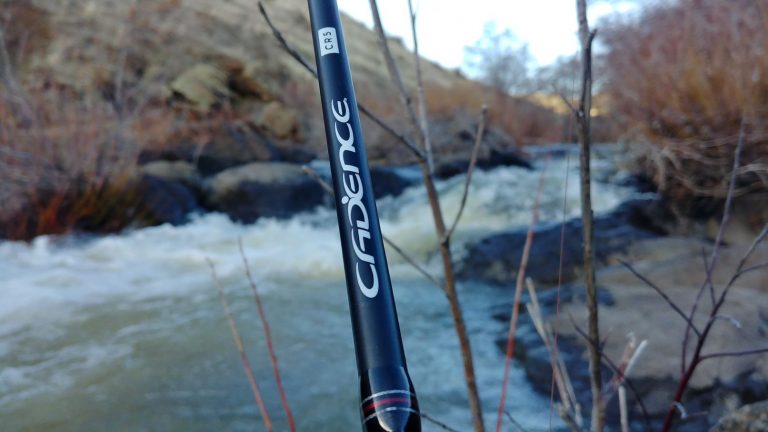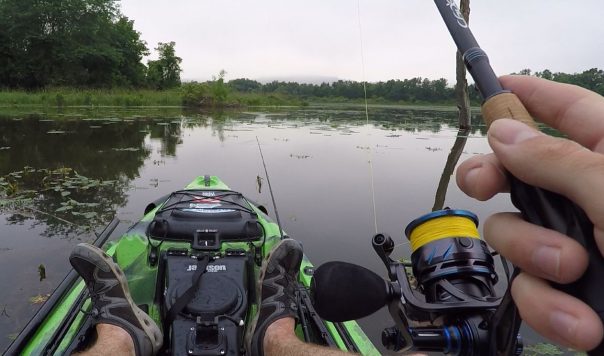For thousands of years, great thinkers agonized over the answer to the question of which came first: the chicken or the egg? Believe it or not, the best spinning combo for kayak fishing produces the same dilemma: What comes first, the rod or reel? Thankfully, there is a clear and unambiguous answer. The rod must come first! The spinning rod is the most critical element of any spinning combo since it determines your ability to cast accurately, play a fish efficiently as well as account for the unique environment on a kayak. Once you select the best spinning rod for kayak fishing, picking the best reel for that rod is next.
So, let’s dig into the specific criteria of how to choose the best spinning rod for kayak fishing. Naturally, when selecting a rod, considering its power, action, length, composition, and construction is paramount. Evaluate these characteristics against the environment where you intend to fish. Will you fish on rivers? Small ponds? Lakes? Inshore? Ocean? How do you fish? Do you cast, troll or mostly jig? Not surprisingly, these are some of the same criteria you used to purchase your kayak. Now, you must merge the two decisions.
How Fishing from a Kayak is Different
So, what’s unique about fishing in a kayak? It all comes down to space. When fishing from an open boat or the shore, you can walk around, cast easily in any direction and work a fish while standing. In a kayak, you will probably do everything from a sitting position. Granted, many modern kayaks are stable and allow the angler to fish from the standing position, but most remain seated to maximize safety. Even if you stand, freedom of movement is very limited. You cannot turn 180° to fight a fish that runs around the rear of the kayak or turn sideways to cast. Instead, you must twist and contort your body. The reality of fishing from a sitting position may force a change in spinning rod length from what you use onshore or powerboat while leaving the other attributes such as power, action, and composition the same.
Key Aspects to Consider When Choosing a Spinning Rod for Kayak Fishing
It’s important when kayak fishing to have a spinning rod that is long enough to work a fish around the bow and stern of the kayak. A typical fishing kayak is around 11 feet long and 30+ inches wide for safety and stability. Therefore, assuming the normal sitting position in the center, the best spinning rod for fishing in a kayak is generally ½ the length of the kayak. There is no constraint on how long a rod can be for kayak fishing.
Ignoring the bow and stern issue, many anglers prefer long rods in the 7 to 7 ½ foot range to obtain longer casts from the constrained sitting position. Kayak fishing also forces consideration of the rod handle. While the style does not matter, the length of the handle from the spinning reel to the butt can make a difference. Choose a rod with a handle that is long enough to provide leverage for casting and fish fighting but short enough to be able to manipulate while sitting and wearing a PFD. There is no formula given the wide variance in arm length and body framework. Thankfully, there are different length spinning rods with any combination of power and action – no need to compromise on these! However, avoid heavy fiberglass blanks in favor of spinning rods made from at least 24-ton carbon fiber blanks since these are lightweight and sensitive. Remember, your kayak is human powered! No need to add anything to the mix that will increase fatigue!
Matching with the Correct Spinning Reel
Once you pick your rod, selecting your spinning reel becomes much easier now. Keep in mind that the reel must now balance with the rod and should be compatible with the type of fish you target. For instance, you wouldn’t want to pair a smaller sized reel with a longer 7 ½ foot rod because the smaller size reel would defeat the purpose of the longer rod which is to increase your casting distance. What good is having the perfect rod for long casting if you run out of line each cast because the reel is too small!
Another important aspect is that the spinning reel must be made from corrosion resistant material since it will get wet and most likely dunked at
some point. Since casting from a sitting position demands more wrist and arm action to achieve the same distance as standing, go as light as possible. A spinning reel made from a lightweight material such as magnesium or carbon composite will reduce fatigue across a long day of fishing.
Remember, kayak fishing allows you to get into places that powerboaters can only dream of! Maximize your time on the water with the right gear – An excellent stable kayak, a reliable PFD, and a spinning combo optimized for your kayak fishing experience!

FREE SHIPPING ON ALL ORDERS

1 YEAR WARRANTY ON ALL PRODUCTS

100% SAFE & SECURE CHECKOUTS



